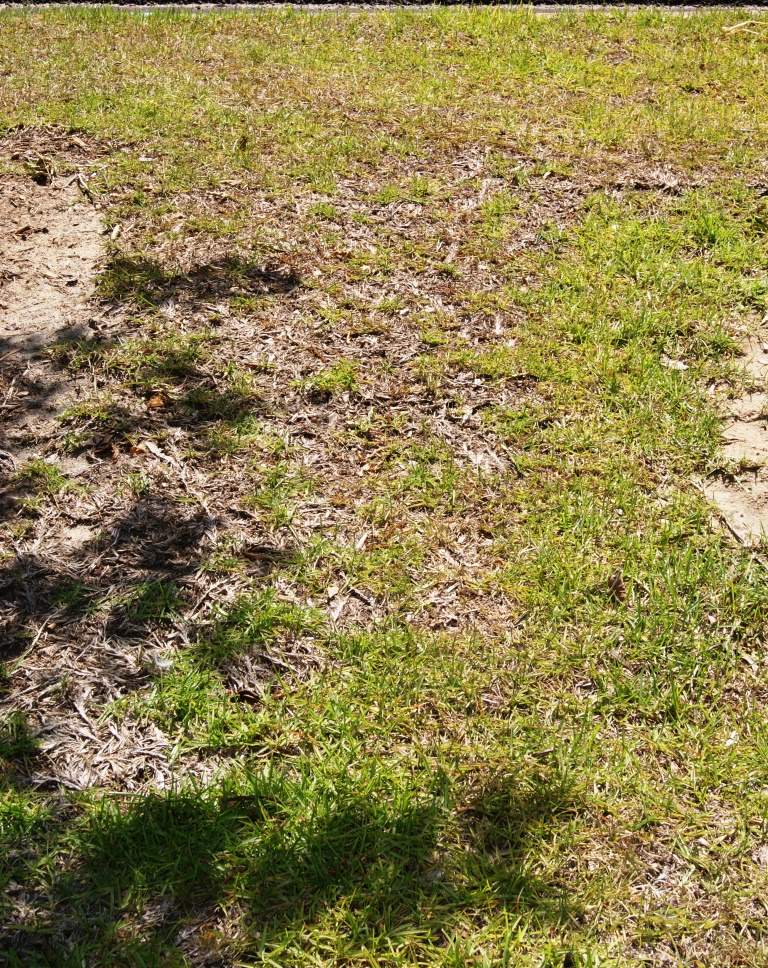
by Larry Williams | Feb 17, 2015
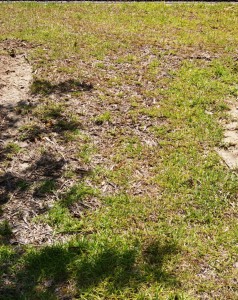
Diseased Turfgrass – Image Credit Matthew Orwat
With a few nice late winter days, many people get a good dose of spring fever. But be careful when the fever hits you. Don’t fertilize your lawn too early. The fever may turn into a lawn “headache”.
Wait to fertilize. Fertilizing while the soil is too cool can result in nutrient deficiencies such as iron deficiency causing yellow areas in the lawn. Fertilizing early can result in injury to a lawn’s roots from fertilizer burn. Or tender growth promoted by an early fertilizer application may be injured by a late frost or freeze. Have patience, allow the lawn to green up on its own and then fertilize, even if it’s not until mid April or May.
Get the numbers right. Our lawns need almost the same amount of potassium as compared to nitrogen. Getting this right can make a difference in the long-term health of your lawn. Look for a lawn fertilizer with an analysis such as 8-0-8, 10-0-10, 15-0-15, 18-0-18, 15-2-15, 16-0-8, etc. Look for a fertilizer with a 1:1 ratio of nitrogen to potassium. These numbers provide the buyer important information. The first number is the percent nitrogen (N), the second number is the percent phosphorus (P) and the third number is the percent potassium (K). Adequate potassium has been linked to reduced disease problems, drought and cold tolerance and enhanced root growth.
Use low phosphorus. Lawn grasses use much less phosphorus than nitrogen or potassium. Because of this and because phosphorus has been implicated as a cause for problems in our surface waters, it’s recommended to base phosphorus rates on the results of a reliable soil test. In absence of soil test results, select a fertilizer with 2% or less phosphorus such as 15-2-15, 8-0-8, 16-0-8, etc. It’s best to base P applications on the results of a reliable soil test.
Don’t fertilize too late. The latest month to fertilize our warm season lawn grasses in North Florida as recommended by University of Florida turfgrass researchers is mid September. If you have centipedegrass, it’s recommended to fertilize no later than July.
Measure your lawn. Most homeowners apply too much fertilizer because they do not know the square footage of their lawn. Measure the size of your lawn (front, back and side yard) and err on the side of using less fertilizer than recommended.
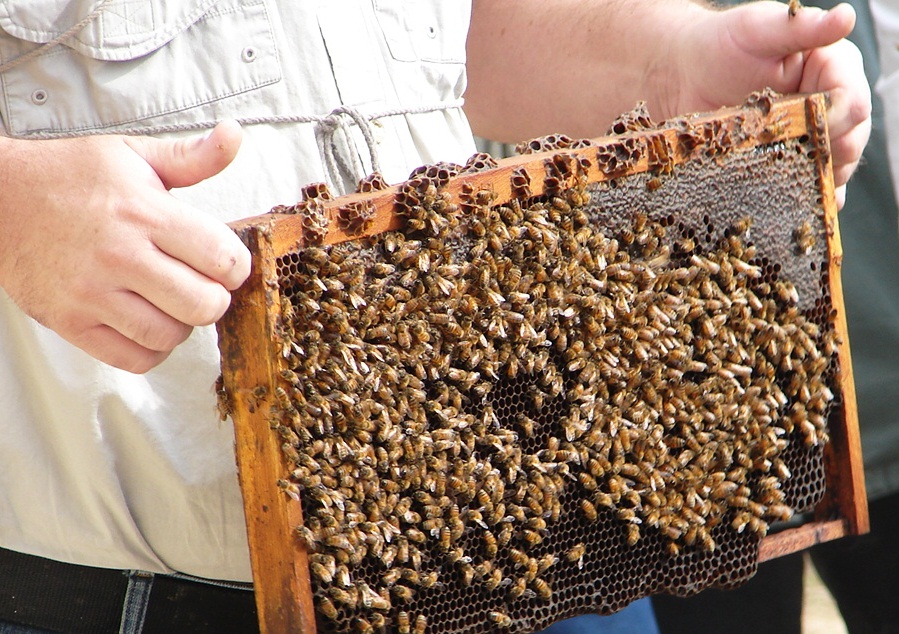
by Matthew Orwat | Feb 13, 2015
UF/IFAS Extension
2015 Beekeeping in the Panhandle Short Course
March 9th

The UF/IFAS Extension Panhandle Agriculture Team is pleased to once again offer a Beekeeping Short-Course in March, 2015. These classes will be offered via interactive video at Extension Offices across the Panhandle. Please call your local UF/IFAS Extension Service (listed below) to register.
Classes will be taught by Dr. Jamie Ellis and other state and nationally recognized experts from the University of Florida Honey Bee Research and Extension Lab and the Florida Department of Agriculture & Consumer Services Bureau of Plant and Apiary Inspection.
Classes are Monday evenings from 6-8 pm Central Time, 7-9 pm Eastern Time, with a Saturday morning bee-yard field day 9-12 am! Each presentation will be followed by an interactive question & answer period.
March 9: Honey Bee Biology, Anatomy, & Hive Structure
March 16: Bee Nutrition and Bee Botany (Identification of Nectar Plants)
March 21: Bee-Yard Field-Day – A hands on learning opportunity!
March 23: Important Pest and Diseases – Identification and Management
Registration for all four classes is $20 per person, or $30 for a family. This fee covers course materials and refreshments.
Please contact your local UF/IFAS Extension Service (see list below) to register:
- Bay County 850-784-6105
- Calhoun County 850-674-8323
- Escambia County 850-475-5230
- Franklin County 850-653-9337
- Gadsden County 850-875-7255
- Gulf County 850-639-3200
- Holmes County 850-547-1108
- Jackson County 850-482-9620
- Jefferson County 850-342-0187
- Leon County 850-606-5202
- Liberty County 850-643-2229
- Okaloosa County 850-689-5850
- Santa Rosa County 850-623-3868
- Wakulla County 850-926-3931
- Walton County 850-892-8172
- Washington County 850-638-6180
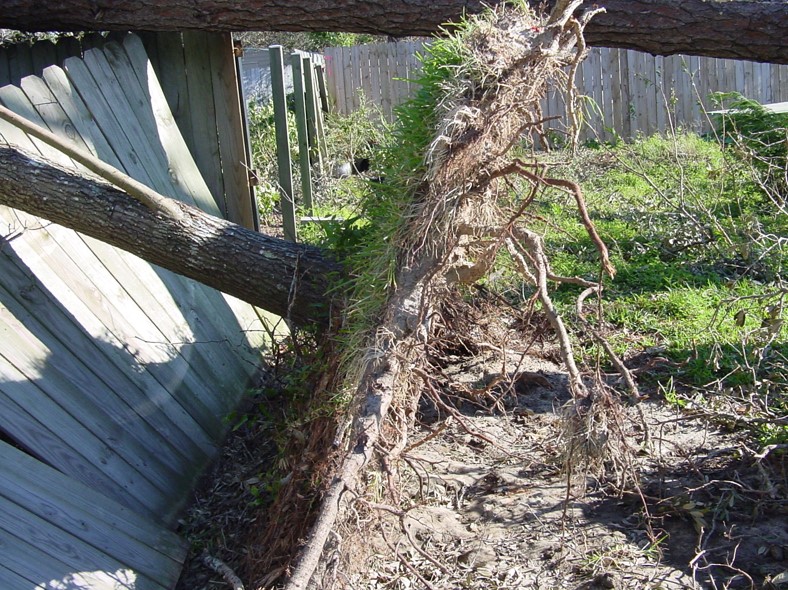
by Carrie Stevenson | Feb 10, 2015
After storms and when homeowners are doing “spring cleaning” around their yards, Extension agents are routinely asked about whose responsibility it is to maintain a tree along a property line. This becomes particularly important in a situation where a property owner’s tree or branch falls and causes damage to their neighbor’s home or possessions.
To clarify this often contentious issue, reference to legal experts is necessary. In a series of publications called “The Handbook of Florida Fence and Property Law,” two attorneys and a University of Florida law student explain several statutes that give us direction. The section on “Trees and Landowner Responsibility” goes into further detail and cites case-law, but for ease of reading it is summarized below.
Situation 1: Removing a healthy tree on a shared property line.
If two neighbors share a tree on their property line and one of them wants to remove it, the adjoining landowner must give their permission. Removing trees can impact property value, heating/cooling bills, or aesthetic value. Without a neighbor’s consent, the landowner cutting down a tree can be legally liable for damages.
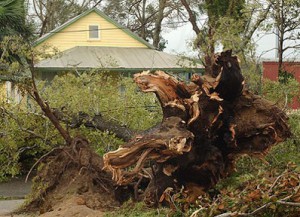
Hurricanes can have serious impacts on trees in their path. Photo credit: Pensacola News Journal
Situation 2: Responsibility for overhanging branches and roots.
Let’s imagine a big spring storm hits your neighborhood, with tons of rain, wind, and lightning. You wake up in the morning and see that a large branch fell from your neighbor’s tree and crushed your kids’ basketball goal. If branches from the neighbor’s tree were otherwise healthy, they are not responsible for any damages resulting from the tree. If it was dead, however, and their negligence contributed to the branch falling, they will be responsible for damages.
Keep in mind that if the neighbor’s tree/branches/roots are in good health but interfering with something in your yard, you may trim them at your own expense. The same goes for your tree hanging in their yard, so while it’s not required, it’s always good to have a conversation first to let them know your plans.
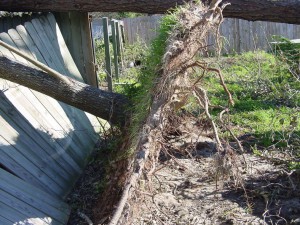
After Hurricane Ivan, this tree’s root system completed uprooted and destroyed and adjacent fence. Photo credit: Beth Bolles
Situation 3: Hurricane Ana, the first big storm of 2015, blows your neighbor’s tree over, into your yard.
Just like the situation with branches and roots, the same principle goes for an entire tree falling on adjoining property—if the tree was alive, it’s the responsibility of the person whose yard it fell in. If it was dead when it fell, it’s the responsibility of the tree’s owner to pay for damages.
In a complicated situation involving property damage, the saying, “good fences make good neighbors” only goes so far. Be sure to note the health of your trees throughout the year and trim back dead or dying branches. If you see serious decay or have concerns about a tree’s health, contact your county Extension office or a certified arborist. Finally, if the circumstances aren’t easily determined, be sure to contact a licensed attorney and/or your insurance company for direction.
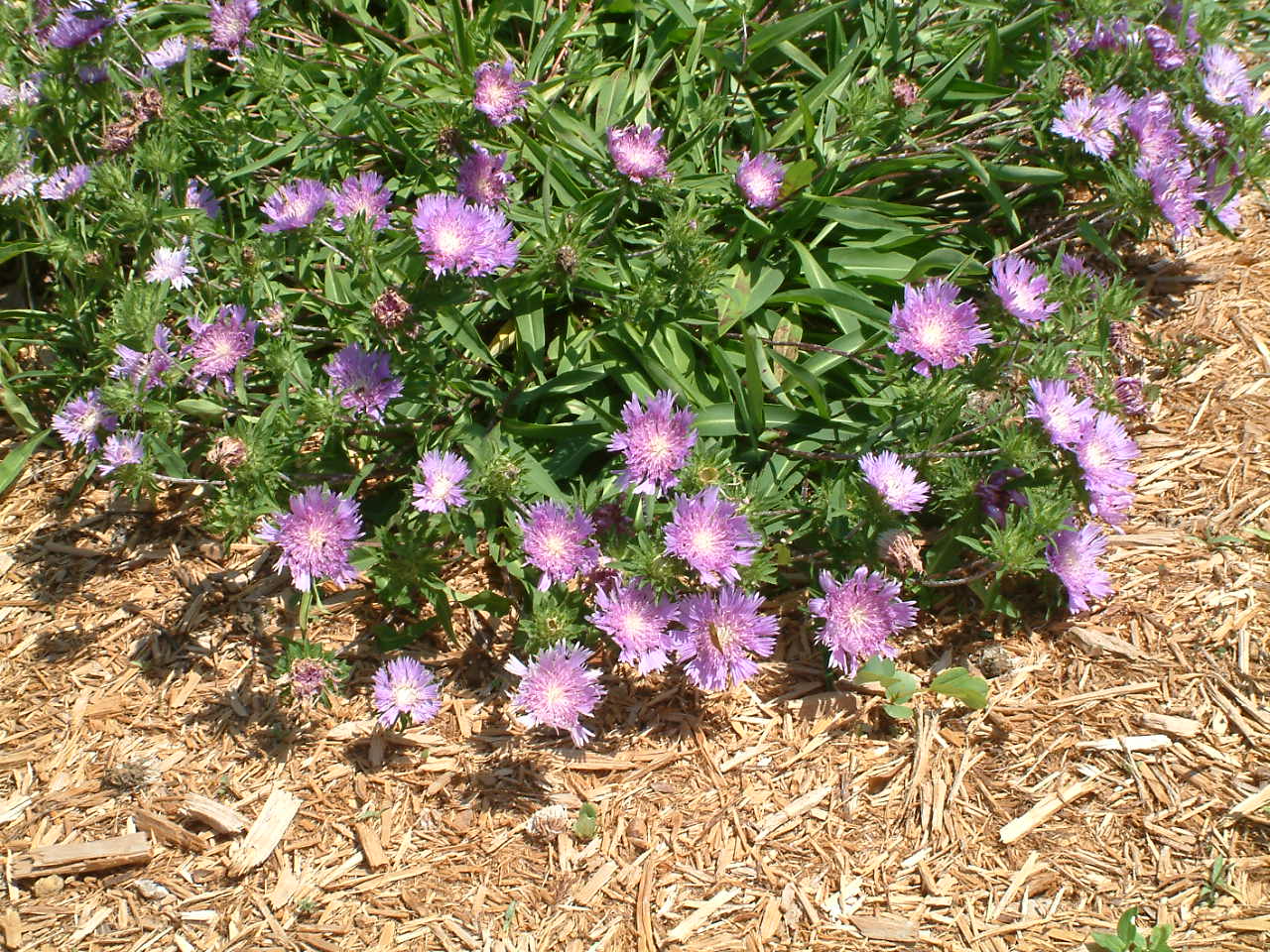
by Beth Bolles | Feb 10, 2015
Variety is the spice of life and more homeowners are incorporating this philosophy into the design of their homes. Windows especially are becoming more of a design feature, so we should change our philosophy on landscaping around them.
Windows allow us to feel connected to the outdoors and allow natural light to pass into the living area. They let us enjoy flowers, wildlife, and even keep an eye on outdoor activities. Because so many homes are using larger frame windows that may be only two feet off the ground, careful planning of landscaping is necessary so views are not blocked by a mass of branches and leaves.
Many common foundation plants that have been planted around homes in the past may not be good choices for homes with low windows. Ligustrum, various holly and loropetalum species, and several types of azaleas will mature to medium‑sized shrubs and block a good portion of windows in a couple of years. Though continuous pruning can keep these plants low, it also can result in pest problems due to frequent pruning wounds and thick growth.
Foundation plants should create a low‑maintenance landscape. Selecting plants that do not grow into the view of windows will save time and money in unnecessary maintenance activities.
Nurseries carry a wide variety of interesting plants. There are dwarf varieties of evergreen shrubs, such as ‘Prostrata’ Japanese plum yew, ‘Purple Pixie’ loropetalum, and many new dwarf nandinas that can be planted in front of some windows.
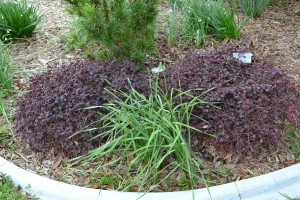
‘Purple Pixie’ loropetalum.
Groundcovers, or even flowering annuals and perennials, could also be good choices under windows. These plants can break the monotony of a typical foundation planting.
Maintaining a mass of annual or perennial flowers below front windows will require a little more work throughout the year. The flower planting will have to be weeded, groomed and even replaced from time to time. A separate irrigation zone for the flowering plants will need to be established so that other foundation shrubs do not receive too much water when the annuals and perennials are watered.
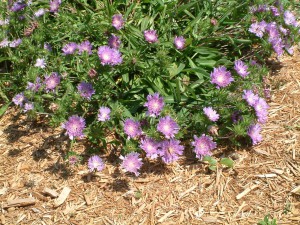
Stoke’s aster is an evergreen groundcover for sunny areas.
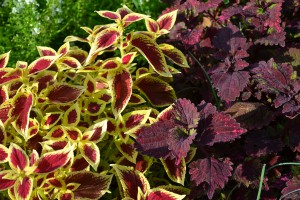
The are almost endless selections of beautiful sun coleus.
In full sun, consider Stoke’s aster, sun coleus, Dicliptera, daylilies, sedum, or Oxeye daisy, In shade, consider caladiums, ferns and ‘Hip Hop’ Euphorbia.
There are many groundcovers that can be used. Know the growth habit of the particular groundcover since many such as Asiatic jasmine and junipers will spread over large areas. Consider clumping plants like muhly grass or ‘Evergreen Giant’ liriope.
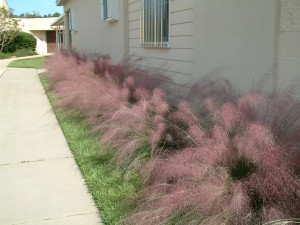
Mulhly grass shows off purplish blooms in the late summer and fall.
Plants aren’t the only possibility for areas around windows. Consider garden ornaments, or create a bird window, with a bird bath, feeder or ground‑feeding area for animals that can be viewed from indoors.
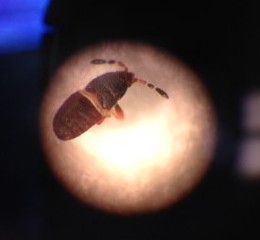
by Julie McConnell | Feb 10, 2015
When talking about pest issues in the landscape, green industry professionals often refer to IPM or Integrated Pest Management.
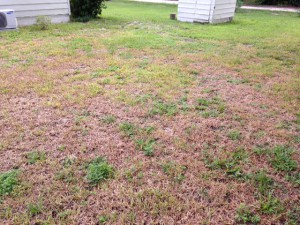
Chinch bug damage to St. Augustinegrass. Photo: Julie McConnell, UF/IFAS
So what is IPM and why should it be used?
IPM is a combination of methods used to manage pests that has the least harmful effect on non-target organisms and the environment. The four categories of IPM are:
-
cultural practices
-
biological control
-
mechanical/physical
-
chemical control
There is not one perfect IPM plan for all landscape situations, but there are some key components to help develop one for any situation.
- Prevent pest problems – choose the Right Plant for the Right Place! Proper planting technique, choosing resistant cultivars, and good maintenance all contribute to overall health and can influence how likely plants are to survive disease, insect, or weed invasions.
- Scout for pests/damage – understand what pests are likely to target common landscape plants. For example, St. Augustinegrass is susceptible to attack by chinch bugs; know what to look for to spot an infestation early.
- Accurately identify the pest – it’s okay to ask for help with this! Your county extension office is a great place to start for both identification and control recommendations. Many times treatments are applied for the wrong pest and that is a waste of your time and money and it can make it harder to get a correct diagnosis.
- Follow control action guidelines – have a plan in place for threshold tolerance. How many pests/amount of damage is okay before

Chinch bug nymph. Photo: Julie McConnell, UF/IFAS
action is taken? What action will you take? Use least toxic methods first and combine the four methods listed above. If using chemicals, know how they work (mode of action) and be sure to rotate properly to prevent resistance.
- Evaluate and revise – continued scouting for pests will indicate if the method is working. Keep records so that you can make changes that will increase effectiveness.
If you are interested in learning more about Integrated Pest Management, visit the IPM Florida website .













